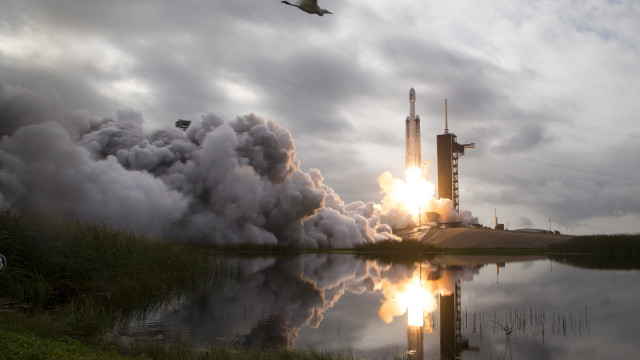A new study has found that space junk is polluting the Earth. Pieces from rockets, space stations and dead satellites that burn up on re-entry leave tiny traces of metal in our planet's atmosphere, reports Scions Alert.
It is not yet known what the impact of these traces might be. But with the increasing rate of launching things into space, the amount of metal vapor in the stratosphere is only expected to increase.
It's a discovery, says the team of researchers led by physicist Daniel Murphy of the National Oceanic and Atmospheric Administration (NOAA), that requires studying the impact of metal vapor in the atmosphere and predicting how it will change over time.
"Currently, the refractory material in stratospheric particles is mostly iron, silicon and magnesium from the natural meteorite source," the researchers write in their new paper. "And the amount of material from the return of the upper stages of rockets and satellites is expected to increase dramatically over the next 10 to 30 years. As a result, the amount of aluminum in stratospheric sulfuric acid particles is expected to become comparable to or even exceed the amount of meteoric iron, with unknown consequences for inclusions and ice nucleation."
Although there is a lot of junk in Earth orbit from the early years of the human space age, more recent launches have been made with limited lifetimes in mind. Spacecraft are being designed that will eventually deorbit and fall back to Earth, using materials that will burn up in the upper atmosphere rather than crash to the surface.
But it is not clear what happens to the vaporised by-products when they enter the atmosphere. Murphy and his colleagues wanted to find out whether the vapours from these deorbits persist in the stratosphere. They took samples of the stratospheric aerosols and analyzed them using the Particle Analysis by Laser Mass Spectrometer (PALMS) instrument aboard NASA's WB-57 high-altitude aircraft.
The aerosols in the stratosphere are mostly droplets of sulfuric acid produced by the oxidation of carbonylsulfide gas, which occurs both in nature and as a pollutant in the atmosphere. These droplets may contain traces of metals and silicon produced when meteorites enter the atmosphere and their surface evaporates as they fall.
The team analysed about 500,000 individual aerosol droplets, looking for trace metals used in the manufacture of spacecraft. About 20 metals were found. Some of these metals were in proportions consistent with evaporating meteorites: but others, such as lithium, aluminium, copper and lead, exceeded the amounts expected from meteorite ablation. The team found that the excess was consistent with ratios expected in spacecraft production.
Other metals they found, such as niobium and hafnium, are common in spacecraft but not found in meteorites at all. Overall, the team found that about 10% of stratospheric aerosols above a certain size contain particles from vaporized spacecraft.
This can have several effects on the Earth and the atmosphere. The presence of these particles can affect the way water freezes into ice in the stratosphere, and affect the size of stratospheric aerosol particles. They could also cause salt deposition on the aerosol particles and alter the refraction of light in the stratosphere.
These may seem like minor changes, but they could have unintended consequences that we really need to study, the researchers say.
"The space industry has entered an era of rapid growth. With tens of thousands of small satellites planned for low-Earth orbit, this increased mass will be divided into many more atmospheric re-entry events," they conclude. "Given that 10% of stratospheric particles now contain elevated aluminum, with many more atmospheric entry events, it is likely that over the next few decades the percentage of stratospheric sulfuric acid particles that contain aluminum and other metals from satellite atmospheric entry will be comparable to the roughly 50% that now contain meteoritic metals."/BGNES







